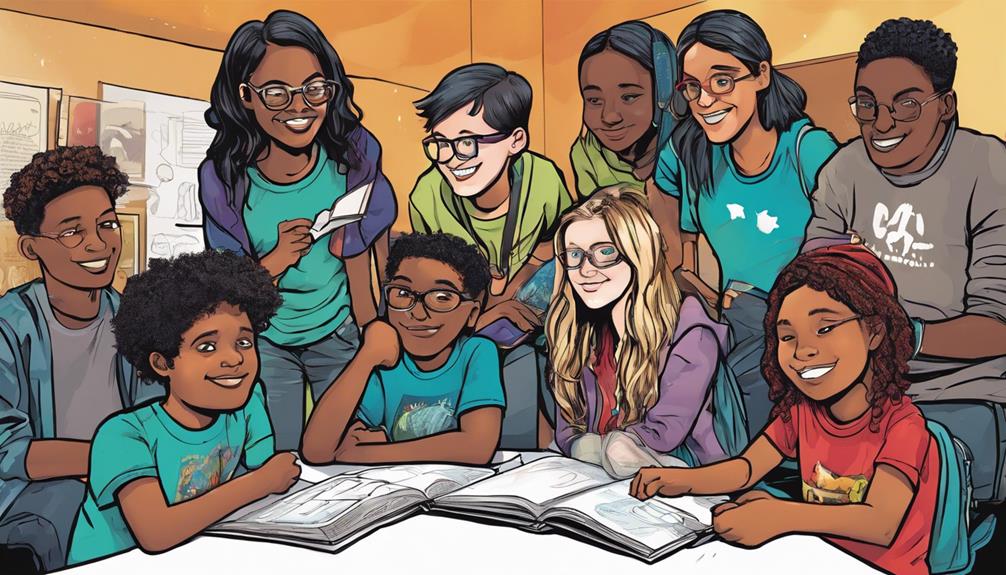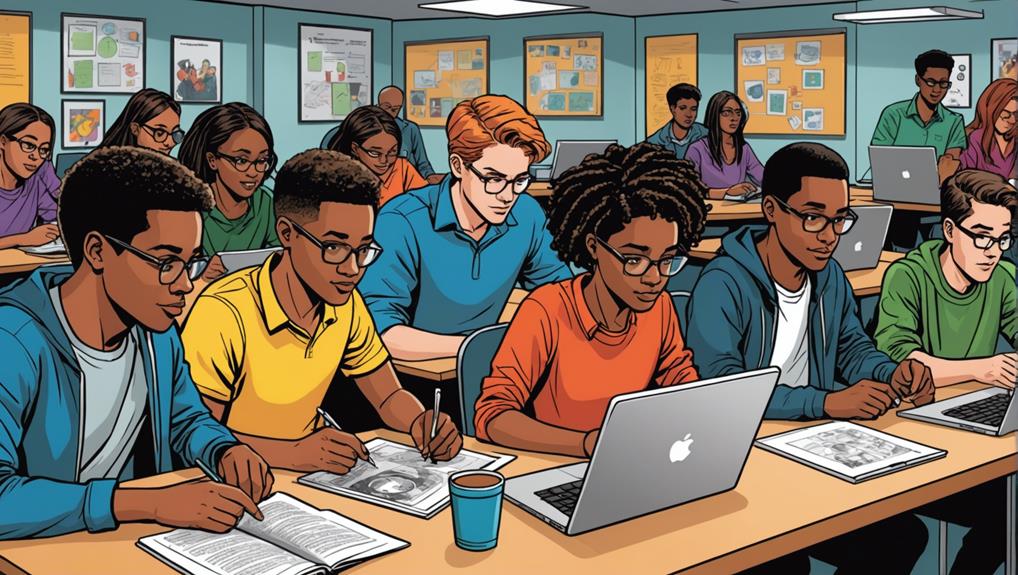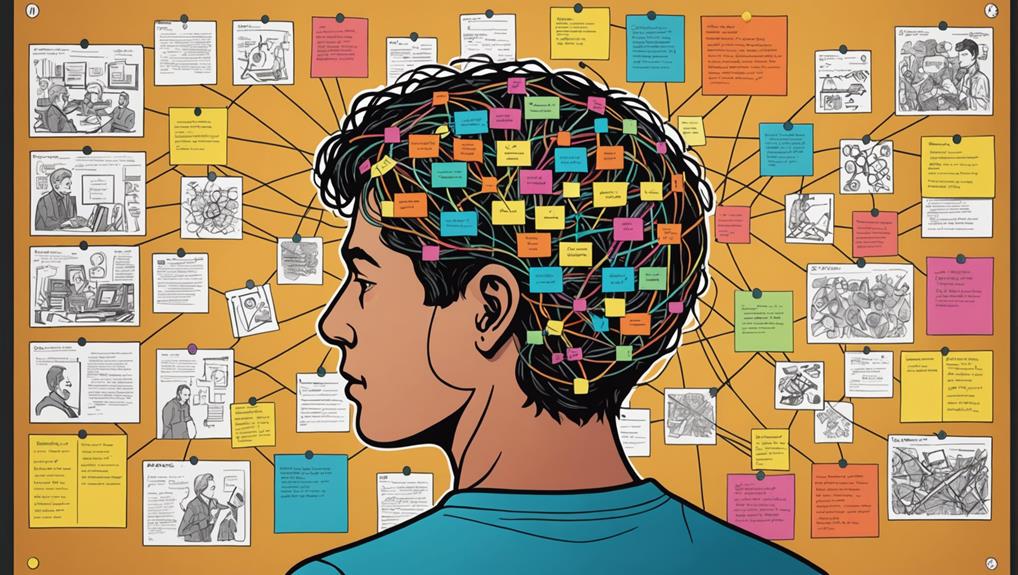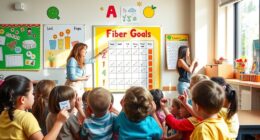Empowering student engagement through innovative strategies opens up a world of interactive learning! Student-Centered Learning revolutionizes education, shifting the spotlight to students for personalized, engaging exploration. Interactive Teaching Methods amp up participation, retention, and feedback in a lively classroom vibe. Feedback Techniques like 'two stars and a wish' boost growth through constructive advice. Building strong Classroom Communities cultivates teamwork, respect, and academic success. Technology kicks it up a notch, sparking excitement with interactive platforms and real-time feedback. Explore these strategies for a truly transformative educational experience!
Key Takeaways
- Implement student-centered learning approaches for active involvement.
- Utilize interactive teaching methods to enhance participation.
- Offer constructive feedback techniques for growth and improvement.
- Foster strong classroom communities to promote collaboration.
- Leverage technology for engaging learning experiences.
Student-Centered Learning Approaches

Utilizing student-centered learning approaches revolutionizes classroom dynamics and empowers learners to take an active role in their education. This innovative method shifts the focus from the teacher to the students, making learning more personalized and engaging.
By incorporating student interests, preferences, and strengths into lessons, educators can create a more meaningful learning experience. Students are encouraged to explore topics that resonate with them, fostering a deeper understanding and long-lasting knowledge retention. This approach not only increases motivation but also cultivates critical thinking and problem-solving skills.
Through active participation in their learning journey, students become more invested in their education, leading to improved academic performance and overall success.
Interactive Teaching Methods

Incorporating interactive teaching methods enhances student engagement and fosters a dynamic classroom environment. By utilizing these methods, students can actively participate in their learning process, leading to improved retention and understanding of the material. One effective way to implement interactive teaching is through the use of technology tools that allow for real-time responses and feedback. This not only makes learning more engaging but also provides instant insights into student comprehension levels. Additionally, interactive teaching encourages collaboration among students, fostering a sense of community and teamwork within the classroom. By incorporating these methods, educators can create a vibrant and stimulating learning environment that caters to the diverse needs and learning styles of students.
| Benefits of Interactive Teaching Methods | Features of Interactive Teaching |
|---|---|
| Enhances student engagement | Real-time responses |
| Encourages active participation | Instant feedback |
| Improves retention of material | Collaboration opportunities |
| Fosters a dynamic classroom environment | Catering to diverse learning styles |
Feedback Techniques for Growth

My approach to feedback techniques for student growth involves leveraging various strategies to provide constructive and personalized guidance.
When it comes to fostering student improvement, I believe in the power of verbal feedback to offer direct and tailored advice. Written feedback is equally essential, leaving a lasting impact on students' learning journeys.
By empowering students through constructive feedback, we motivate them to aim for excellence. I find that written comments are more impactful than mere letter grades, as they offer specific insights for improvement.
Implementing the 'two stars and a wish' rule, where two positive comments are given along with one area for growth, helps students see their progress while identifying areas for development.
Building Strong Classroom Communities

Establishing strong classroom communities is crucial for fostering a positive learning environment where students feel supported and engaged in their educational journey. One effective way to build a strong classroom community is through the use of engaging activities that promote collaboration and teamwork. By incorporating group projects, peer assessments, and encouraging student participation, a sense of belonging and mutual respect can be nurtured among classmates. Additionally, creating opportunities for open discussions and providing real-world examples can enhance students' connections with the material and each other. Building a strong classroom community not only improves academic outcomes but also cultivates a sense of camaraderie and support that can benefit students both inside and outside the classroom.
| Benefits of Building Strong Classroom Communities | ||
|---|---|---|
| Encourages collaboration and teamwork | ||
| Fosters a sense of belonging and mutual respect | ||
| Enhances student engagement and academic outcomes | ||
| Promotes supportive relationships among classmates | ||
| Cultivates a positive learning environment |
Leveraging Technology for Engagement

Utilizing technology in education revolutionizes student engagement and enhances learning outcomes. As a teacher, I've witnessed firsthand how incorporating technology in the classroom can spark excitement and foster deeper understanding among students.
From interactive online platforms to educational apps, technology offers a plethora of tools to make learning more engaging and interactive. Students can now access a wealth of resources at their fingertips, making learning more personalized and self-paced.
Additionally, technology allows for real-time feedback and assessment, enabling educators to tailor their teaching methods to meet the individual needs of each student. Embracing technology in education not only enhances student engagement but also equips them with essential skills for the future digital world.
Frequently Asked Questions
How Can Students Take Ownership of Their Learning in Student-Centered Approaches?
I guide students to take ownership of their learning by fostering independence, encouraging self-assessment, and promoting critical thinking. By empowering students to set goals, reflect on progress, and seek feedback, they become active participants in their educational journey.
What Are Some Examples of Interactive Teaching Methods Beyond Traditional Lectures?
In teaching, I paint a canvas of engagement with interactive methods. Rather than lectures, I orchestrate discussions, hands-on activities, real-world examples, and group projects. Students flourish in this dynamic landscape of learning.
How Can Teachers Provide Effective Feedback for Student Growth and Improvement?
Providing essential feedback is vital for student growth. I use verbal and written feedback to guide improvement. Constructive comments empower students. Positive reinforcement, alongside areas for development, fosters progress. Tailoring feedback to individual needs guarantees lasting impact and growth.
What Strategies Can Be Used to Foster a Sense of Community in the Classroom?
To foster a sense of community in the classroom, I plant seeds of connection, nurturing them with open communication, group activities, and shared goals. By cultivating a supportive environment, we bloom together as one.
How Can Technology Be Leveraged to Enhance Student Engagement in Unique Ways?
To enhance student engagement uniquely, technology can be leveraged by incorporating interactive platforms, virtual simulations, and gamified learning experiences. These tools captivate learners, promote active participation, and provide personalized feedback for a dynamic educational experience.
Conclusion
To sum up, empowering student engagement through innovative strategies is key to fostering a dynamic learning environment.
By implementing student-centered approaches, interactive teaching methods, feedback techniques for growth, and leveraging technology, educators can create an engaging classroom experience that promotes academic success.
For example, incorporating peer assessments and group projects not only enhances collaboration but also encourages students to take ownership of their learning.
Embrace these innovative strategies to transform student engagement and drive academic excellence!









